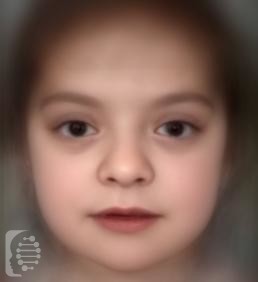What is Melnick-Needles syndrome (MNS)?
Melnick-Needles syndrome is a rare genetic condition affecting mainly the bones. The main symptoms affect the skeletal and face.
Due to how the syndrome is inherited (X-linked dominant) the syndrome mainly affects females with affected males rarely surviving birth or infancy, so severely are they affected by the condition.
To date, there have been 70 cases of this syndrome reported worldwide.
This syndrome is also known as:
Melnick-Needles Osteodysplasty, MNS; Osteodysplasty of Melnick and Needles
What gene change causes Melnick-Needles syndrome (MNS)?
A change in the FLNA gene causes the syndrome.
It is inherited in an X-linked dominant pattern.
Syndromes inherited through an X-linked dominant pattern are caused by a mutation in a single copy of the gene. This mutation may occur in one of a female’s two X chromosomes or the single X chromosome in males. Symptoms are typically more severe in males than in females.
What are the main symptoms of Melnick-Needles syndrome (MNS)?
The unique facial features of the syndrome include widely spaced eyes, full cheeks, and a very small lower jaw. Slow development of the skull is also a feature.
- Short upper arms and fingers are a symptom. As are bowed short bones in the arms and legs. A misalignment between the femur, or long bone of the leg, and the hip may produce an unusual gait affecting mobility and walking. Dislocation of the hip is a not uncommon syndrome.
- Other main symptoms include a small chest cavity, abnormal ribs, a short collarbone, and narrow shoulders. Skeletal and pelvic abnormalities may also be present.
- Kidney issues, heart defects, and high blood pressure in the lungs are also potential symptoms of the syndrome. Affected individuals may also be more susceptible to respiratory infections.
Possible clinical traits/features:
Anterior concavity of thoracic vertebrae, Cleft palate, Arachnodactyly, Abnormality of the fontanelles or cranial sutures, Abnormality of the metacarpal bones, Abnormality of the hip bone, Abnormality of the clavicle, Abnormal cardiac septum morphology, Abnormality of the ribs, Abnormality of the metaphysis, Abnormal form of the vertebral bodies, Abnormal cortical bone morphology, Micrognathia, Pectus excavatum, Narrow chest, Kyphoscoliosis, Macrotia, Joint hypermobility, Limited elbow extension, Misalignment of teeth, Mitral valve prolapse, Long neck, Long toe, Frontal bossing, Strabismus, Proptosis, X-linked dominant inheritance, Tricuspid valve prolapse, Stillbirth, Scoliosis, Tibial bowing, Skeletal dysplasia, Pulmonary arterial hypertension, Talipes equinovarus, Recurrent respiratory infections, Respiratory failure, Reduced number of teeth, Short thorax, Obtuse angle of mandible, Short clavicles, Hypoplastic scapulae, Hoarse voice, Hydronephrosis, Short humerus, Genu valgum, Full cheeks, Frontal hirsutism.
How is it diagnosed?
To find out if someone has a diagnosis of Melnick-Needles syndrome (MNS), it is important to have a consultation and evaluation with a clinical genetic specialist. Specialists may also suggest specific genetic testing or other types of tests to help reach a diagnosis. FDNA’s AI technology can help speed up the diagnostic process by analyzing facial features and other health information.

